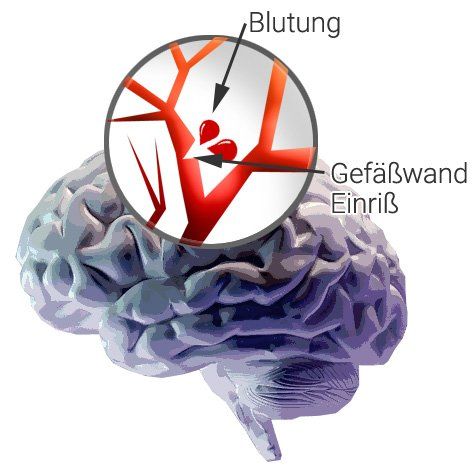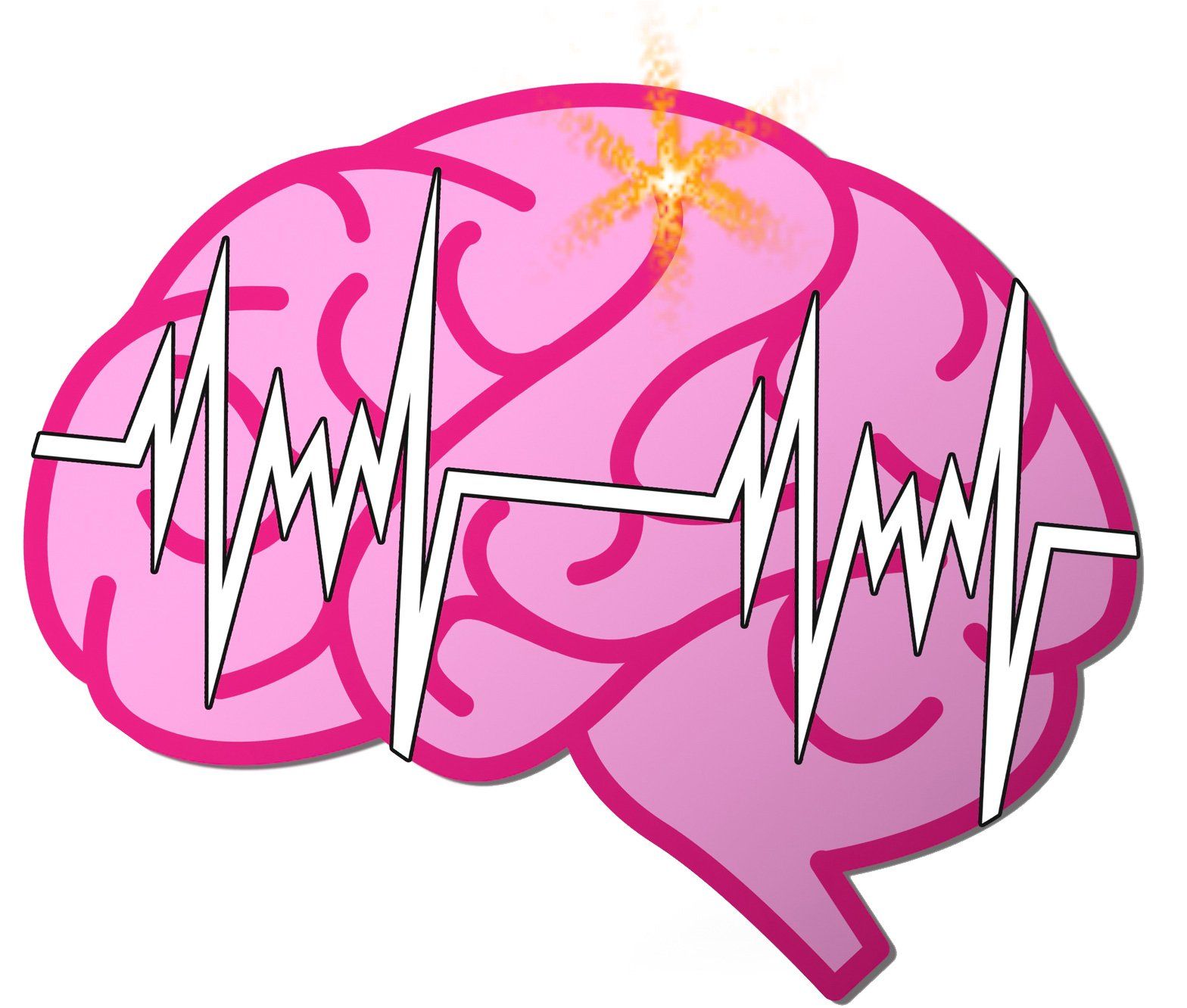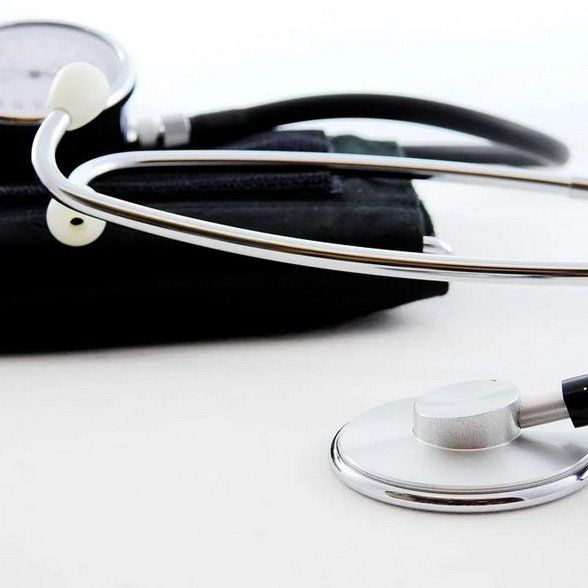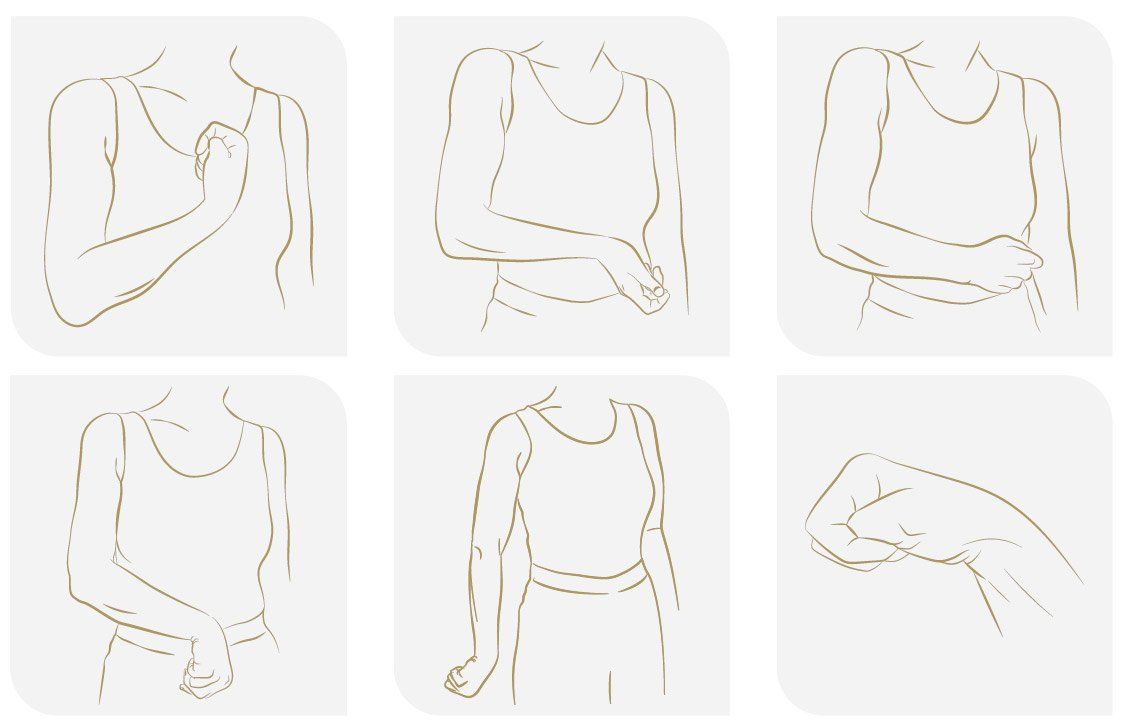General information about stroke and spasticity
Stroke:
Definition of stroke:
A "stroke" refers to the sudden onset of symptoms such as hemiplegia, movement, speech and consciousness disorders. A stroke is also known as apoplexy, brain attack
or cerebral insult. The cause of a stroke is either a cerebral infarction or a cerebral hemorrhage. This can only be determined with certainty in the clinic using imaging (CT/MRI).
Symptoms:
The brain is supplied with blood via four large arteries. Depending on the location and cause of the stroke, various symptoms can occur, such as:
Headaches and dizziness (possibly first warning symptoms), acute paralysis of one entire side of the body, often affecting the legs or arms, with paralysis of one side of the face (facial paresis) with drooping corners of the mouth and uncontrolled salivation, sensory disturbances (usually on one side of the paralyzed side), visual disturbances (e.g. double vision, loss of visual field), pupil differences, speech disorders (difficulty finding words), speech disorders (slurred speech), impaired balance and movement coordination, etc.
A practical example:
Mr. Andreas Sommer said to his wife: "I'm going to lie down in the bedroom for a while because I'm having these vision problems again." When Mrs. Sommer worriedly checked on her husband three hours later, she found the 72-year-old lying awake in bed. "Andreas, what's wrong?" Mr. Sommer looked at her questioningly and stammered a few incomprehensible syllables. He tried to get up, but couldn't. Mrs. Sommer immediately called the emergency doctor.
How do I prevent a stroke?
Recognize stroke risks and prevent them.
Modifiable stroke risk factors:
Heart disease, high blood pressure, stress, alcohol consumption, elevated blood lipids, smoking, abdominal obesity, diabetes.
What most of the risk factors listed have in common is that they promote what is known as arteriosclerosis.
In arteriosclerosis, substances such as cholesterol, blood cells, connective tissue and calcium salts are deposited on the inside of the blood vessels.
The deposits cause the normally elastic vessel wall to become increasingly rigid and its smooth inner wall to become rough. The rough spots allow further deposits to form. These grow and the vessel becomes increasingly narrow. Small components of the blood get stuck, clump together and blood clots (thrombi) form. If the blood clot breaks off, this can lead to an ischemic stroke.
A hemorrhagic stroke can occur when the blood vessels in the brain have a weak wall structure, such as due to arteriosclerosis.
Ischemic stroke

What is an ischemic stroke (cerebral infarction)?
An ischemic stroke occurs when blood flow to the brain is interrupted. The brain is supplied with blood via four large arteries (these are blood vessels that pump blood enriched with oxygen in the lungs from the heart to the systemic circulation/brain).
The blockage of blood flow in an artery occurs due to various causes such as a thrombus (blood clot) and leads to the brain cells no longer being supplied with oxygen and nutrients.
Hemorrhagic stroke

What is a hemorrhagic stroke (brain hemorrhage)?
A hemorrhagic stroke occurs when there is bleeding into the brain tissue. This can occur when the blood vessels in the brain have a weak wall structure, vascular malformations are present, or the vessels are under exceptionally high pressure, such as in the case of high blood pressure.
Depending on its extent and location in the brain, the cerebral hemorrhage causes severe symptoms such as very severe headaches.
Preventive action
Exercise more often. This has a positive effect on cardiovascular and vascular health, blood pressure and weight.
Less alcohol & nicotine. Nicotine causes arteries to narrow, the pulse rate increases and the blood becomes more viscous.
In some people, alcohol can prolong the blood clotting time and temporarily increase the heart rate and constrict the blood vessels.
Reduce your weight. Being overweight affects blood sugar and blood pressure. A healthy diet and weight loss lead to a direct reduction in blood pressure for most people and reduce the risk of a stroke.
Spastic
How does spasticity occur?
The most common cause of spasticity is a stroke. Spasticity is damage to the central nervous system (CNS) and thus to the brain, spinal cord or their connections. Some of these areas are connected to the skeletal muscles via the nerve pathways and thus control our movements. And these are precisely the areas affected by spasticity.

Spasticity, also known as spasm or spasticity, is derived from the Greek word "spasmós" and means cramp. Damage to the central nervous system (CNS) leads to a pathological increase in muscle tension or muscle tone. The overactive muscles lead to permanent hardening and stiffening, the so-called spastic paralysis.
The nerves cause the muscle to be permanently excited. This can range from a slight increase in the muscle's own tension (increased muscle tone) to a clear command for muscle contraction (muscle tension). The activity and outgoing movements of the muscle can no longer be controlled under these circumstances. Spastic paresis or paralysis occurs.
Spasticity usually develops within the first 30 days after the stroke in about a quarter of those affected. Spasticity often worsens over the next few months to a year.
Muscle stiffness often leads to painful and disabling postures. This severely impairs the quality of life and makes it impossible to carry out everyday activities. Spasticity is not a disease, but a symptom that the central nervous system (brain 🧠 or spinal cord) has been severely damaged, for example after a stroke or a traumatic brain injury.
Not all spasticity is the same!
Spastic paralysis can vary in severity and accompanying symptoms. This depends on how severely certain areas of the brain or spinal cord have been affected. Spastic paralysis can manifest itself as mild muscle stiffness with minor restrictions in movement or as permanent muscle spasm with severe restrictions or even complete inability to move.
Spastic paralysis can affect individual muscles or entire areas of the body. If the spasticity only occurs locally, it is referred to as focal spasticity. If all limbs are affected, the spasticity is referred to as generalized.
Different dimensions of spasticity are presented below:
- Monospasticity: When one leg or one arm is affected by the spasticity. Paraspasticity: When both arms or legs are affected by the spasticity. Hemispasticity: On one side of the body, one arm and one leg are affected by the spasticity. Tetraspasticity: All extremities are affected by the spasticity. Depending on the severity, the neck and trunk muscles can also be affected.
Other symptoms
Damage to the brain or spinal cord can cause further symptoms of spasticity. These include:
- Sensitivity disordersParalysisDifficulty coordinatingUncontrolled muscle movementsWeaknessPain
This is what spasticity in the arm can look like
Due to the varying degrees of spasticity in muscles, posture patterns arise that are often typically pronounced. The posture and movement pattern in the case of spastic paralysis of the arm or leg can be assigned to one of the following patterns in most affected people, although the transitions are fluid.
How do I recognize spasticity?
At the beginning of the stroke, symptoms such as paralysis or loss of speech occur, but lesions in the central nervous system are already beginning to form at this point. In the weeks or months that follow, spastic movement disorders can occur as a late consequence, which have a major impact on the further course of recovery. It is estimated that around 250,000 patients in Germany have spasticity. Damage to the central sensorimotor system causes muscle tension, clonus, spasms and spastic dystonia, which severely impair motor skills. Increased muscle tone and altered soft tissue and muscle fiber density are also characteristic of spasticity. The flexion and extension movement of several joints, e.g. arm abductors/adductors, elbow, flexors and extensors, knee extensors, knee flexors, wrist and fingers, can be tested and assessed. The Ashworth and Tardieu scales are used to assess the degree of spasticity, the Zorowitz questionnaire allows to detect spasticity (see below).
What parameters does a doctor use to evaluate?
Ashworth-Scale
The Ashworth scale is used to rate muscle spasticity on a point scale. The increase in muscle tension is measured in a passive state. Doctors first examine the patient's physical condition before using medical technology such as CT and MRI for neurological tests and imaging procedures. The findings of muscle stiffness, i.e. the severity of the spasticity, provide information about the limitations in everyday life. In addition, the doctor assesses muscle strength, muscle tone, joint mobility and pain intensity.
Modified Ashworth Scale
The original Ashworth scale was a 5-point scale for simple measurement and assessment of spasticity. This scale was later modified to a 6-point scale by Bohannon and Smith (1987).
Please ask your doctor which point scale your assessment was based on.
Tardieu-Skala
Compared to the Modified Ashworth Scale, the Tardieu Scale is better suited to distinguish contractures or movement restrictions from spasticity.
Two measurements are taken: quality of muscle response and angle of muscle response at slow and fast speed.
Please ask your doctor which point scale your assessment was based on.
Zorowitz questionnaire (completed by the patient)
The Zorowitz questionnaire is one of the first practical instruments for spasticity that complements the Ashworth and Tardieu scales described previously. If the Ashworth and Tardieu scales are used to assess the degree of spasticity, this 13-item spasticity tool is designed to detect spasticity. It should be noted that the screening tool is completed by the patient and therefore does not capture the caregiver perspective.
Here you can download the Zorowitz questionnaire as a pdf file:
Barthel-Index
The Barthel Index systematically records a patient’s basic everyday functions.
Different areas of activity of the patient are evaluated with points.
Please ask your doctor what your Barthel Index score is.
Modified Rankin Scale (mRS)
The mRS is a standardized measure that describes the extent of disability after a stroke.
Please ask your doctor what the evaluation of your mRS was.
Body-Mass-Inde (BMI)
The body mass index (BMI) helps the doctor assess whether you are of normal weight, overweight or underweight.
The BMI is calculated using the following formula:
Body weight (in kilograms) divided by height (in cm) squared.
Here is a link to a free BMI calculator:
www.anad.de/essstoerungen/bmi-rechner/?gclid=Cj0KCQjw3v6SBhCsARIsACyrRAko-z20cCDPb2umQVg9XE91ZCHLAp-BdoBsXork5OMq8cunpq8Yqm0aAjCSEALw_wcB
Geriatric Depression Scale (GDS)
The GDS is a geriatric assessment instrument, also known as the Yesavage Depression Test.
With the help of a questionnaire that has to be filled out by the patient, possible indications of existing age-related depression or depressive mood can be given.
You can download the questionnaire as a PDF file here:
Better understand medical terms
Apoplexy = synonym for stroke.
Aspiration pneumonia = pneumonia caused by swallowing disorders after a stroke
Amnesia = loss of memory of time and/or content.
Aphasia = speech disorder
Ataxia = impaired coordination.
Apraxia = Disturbance of the ability to carry out goal-directed movements or actions in a meaningful and orderly manner, often occurs together with aphasia.
Arteriosclerosis = colloquially “hardening of the arteries”, whereby material, fats present in the blood (“atherosclerosis”) and calcium are deposited on the inner walls of the blood vessels and narrow or close the vessels.
Decubitus = pressure ulcer that can occur due to long-term immobility and the resulting reduced blood flow to the contact surface.
Dysarthria = speech disorder
Dysphagia = swallowing disorder
Embolus = endogenous or foreign material (e.g. blood clot) that is carried through the bloodstream and blocks the vessel. The source can be vascular sclerosis or a clot from the heart in the case of atrial fibrillation.
Facial palsy = facial paralysis
Hemorrhage = bleeding
Hemianopia = loss of visual field on one side.
Hemiparesis = incomplete paralysis of one side of the body.
Hemiplegia = complete paralysis of one side of the body.
Cerebral hemorrhage = bleeding in the head that can lead to a hemorrhagic stroke. The bleeding can occur either in the brain or between the meninges.
Cerebral infarction = most common stroke, characterized by insufficient blood flow to the brain due to vascular occlusions caused by arteriosclerosis or embolism.
Cerebral edema = swelling in the brain, can occur in major strokes and cause further damage due to intracranial pressure.
Hypertension = high blood pressure, is one of the risk factors that promote the development of a stroke.
Ischemia = reduced blood flow
Clonus = spasmodic muscle twitches.
Contracture = shortening and hardening of a tissue (muscles or joints), which often leads to a restriction of movement and occurs when spasticity persists for a long time.
Muscle tone = state of tension of a muscle.
Neglect = Disturbance of attention characterized by a neglect of space or part of the body.
Neuroplasticity = ability of the brain to undergo functional, structural and adaptive changes following changing physiological requirements or damage.
Paresis = paralysis
Pathological reflexes = “diseased” reflexes that only occur after an illness.
Pusher symptoms = disturbance of perception that leads to active pressing of the unaffected extremity towards the affected extremity.
Stroke = syndrome that develops from a sudden disruption of blood circulation in the brain and includes various symptoms and complaints.
Sensitivity = perception of touch, pain, temperature or position sense (of the joint position). Failures, particularly in the sense of pain and temperature, can also lead to painful hypersensitivity.
Spasm = cramp
Spasticity = abnormal increase in muscle tension (spasm = cramp), usually the result of damage to the brain or spinal cord. Usually leads to greater impairment of movement and, in the long term, to contractures.
Stroke unit = specialized department in a hospital that provides acute treatment for people after a stroke.
Platelet function inhibitors = “blood thinners” to prevent the progression of arteriosclerosis and thus another stroke.
Transient ischemic attack (TIA) = temporary disruption of blood flow to the brain, with symptoms usually disappearing after minutes or a few hours.
Thrombectomy = stroke therapy in which the blood clot is mechanically dissolved.
Thrombolysis = stroke therapy in which the blood clot is removed by an infusion of a special medication.
Thrombus = “blood clot” that can lead to the blockage of a vessel, thereby impairing the blood and oxygen supply to the region supplied.
Visual loss = complete loss of vision.
Sources: Correll, A. Spasticity after stroke. CV 17, 30–34 (2017). https://doi.org/10.1007/s15027-017-1220-z Duden Dictionaryhttps://www.duden.de/woerterbuch Search for medical knowledge, share know-how - DocCheck Flexikonhttps://flexikon.doccheck.com/de/Spezial:MainpageNolte, CH, Müller-Nordhorn, J., Jungehülsing, GJ et al. Symptoms, risk factors and etiology of transient ischemic attack and stroke. Nervenarzt 76, 1231–1238 (2005). https://doi.org/10.1007/s00115-005-1928-3 Nolte, C., Endres, M. Acute care of ischemic stroke. Internist 53, 585–594 (2012). https://doi.org/10.1007/s00108-011-3003-4Acute therapy of ischemic strokeLL_22_2012_akuttherapie_des_ischaemischen_schlaganfalls.pdf (dsg-info.de) Stroke (apoplexy): warning signs, causes, therapy - NetDoktor
https://www.netdoktor.de/krankheiten/schlaganfall/Correll, A. Spasticity after stroke. CV 17, 30–34 (2017). https://doi.org/10.1007/s15027-017-1220-z

















